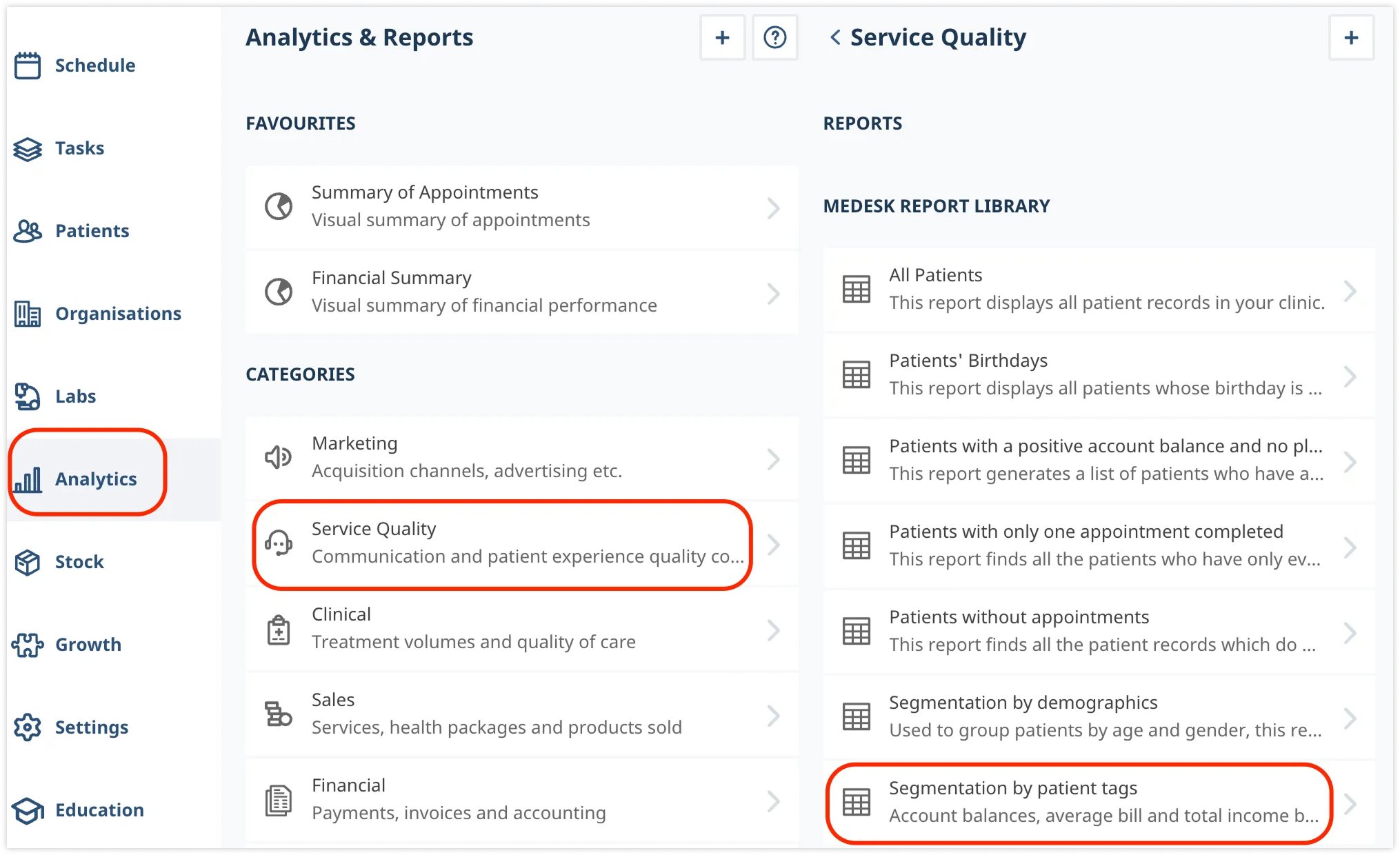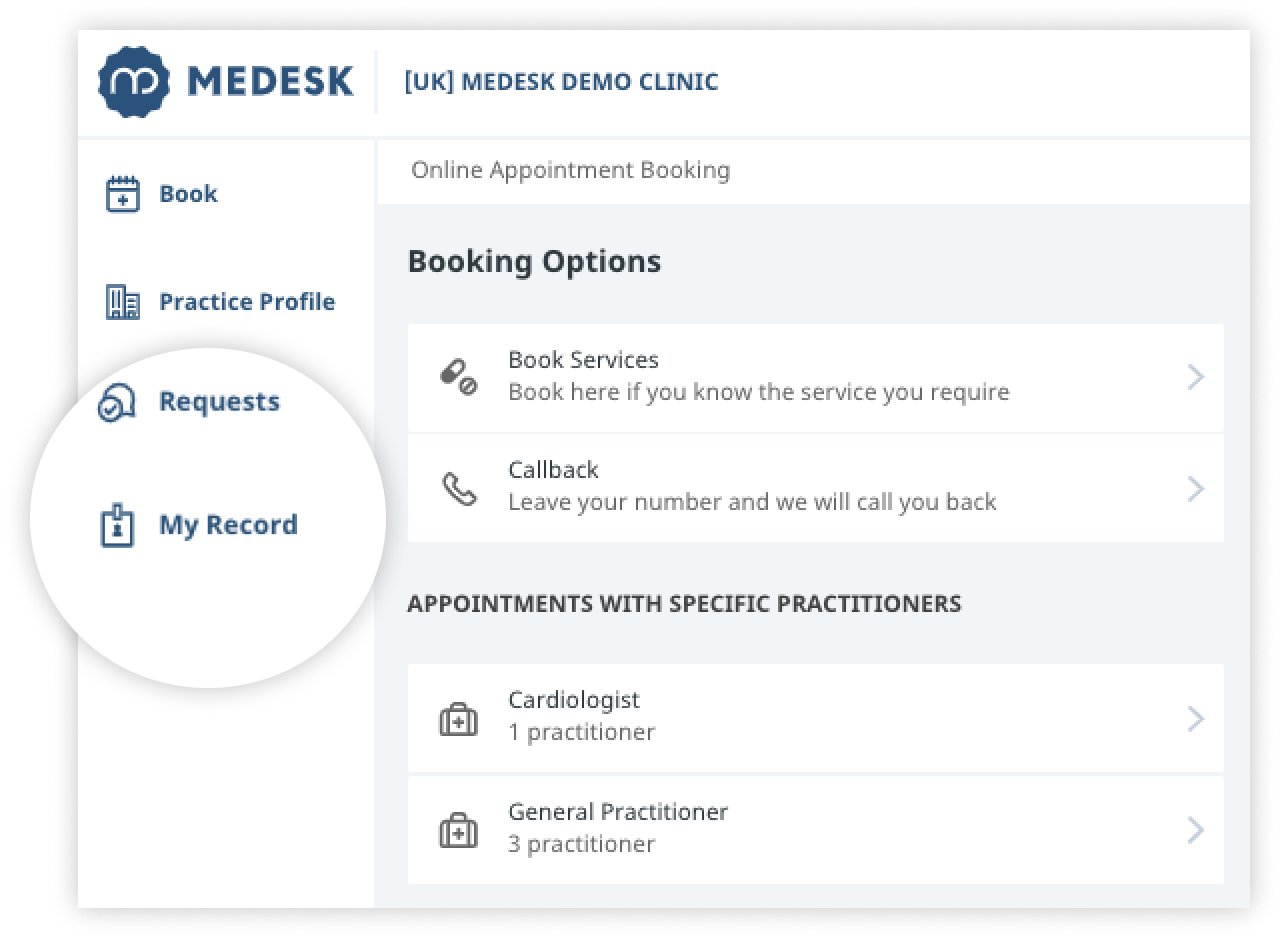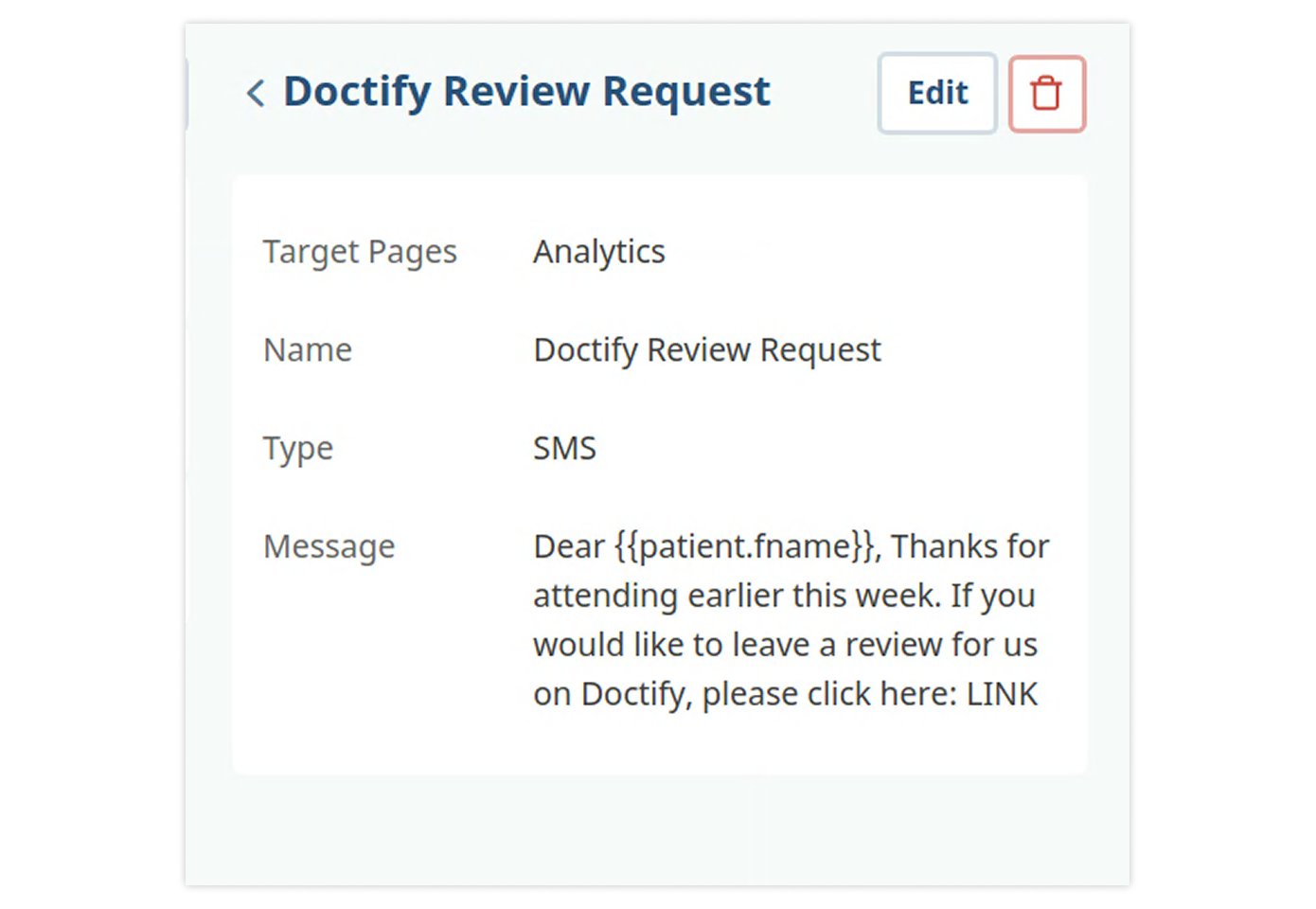You have probably thought, "Why do patients come to us? Where do they come from, and what problems do they have?" The answers to these questions help you get to know your patients better and create a long and strong partnership with them.
Patient journey mapping is the key. By visualising every step of a patient’s interaction with healthcare providers, UK clinics can identify pain points, streamline processes, and significantly boost satisfaction. Medesk’s innovative tools help optimize these journeys, ensuring that each touchpoint is a positive one.
In this article, we’ll explore patient journey mapping, its benefits, and how UK private clinics can leverage it to elevate care, improve patient engagement, and boost retention in 2025.
Learn how to simplify your practice workflow and free up more time for patients with Medesk.
Open the detailed description >>What is Patient Journey Mapping?
Patient journey mapping is a visual representation of every interaction a patient has with a healthcare service provider, from initial awareness and appointment booking to treatment and follow-up care. It helps clinics:
- Identify inefficiencies (e.g., long wait times, confusing paperwork).
- Improve communication between staff and patients.
- Enhance patient satisfaction by addressing frustrations proactively.
Essentially, a patient journey map is your view of how patients interact with your clinic, what they like and what they would like to change, and why customers come (or don't come) to your clinic.
Healthcare journey mapping helps you answer these questions:
- Who is my patient?
- How and where can he or she find out about the clinic?
- How will he/she get to the clinic?
- What does the client expect from the clinic?
- What are the problems he is concerned about?
- How can the clinic solve these problems?
- What information does the client want to know?
- Does he/she like the service at the clinic?
How Does It Differ from Patient Experience Mapping?
While both tools focus on improving care, they serve different purposes:
| Patient Journey Mapping | Patient Experience Mapping |
|---|---|
| Tracks sequential steps a patient takes | Measures emotional responses at each touchpoint |
| Focuses on process efficiency | Focuses on patient feelings and perceptions |
| Used for operational improvements | Used for brand perception and loyalty |
For example, experience mapping might highlight a patient’s frustration during long wait times, while journey mapping pinpoints the operational cause, such as inefficient scheduling.
Combining both provides a 360-degree view of patient care. But still, journey mapping offers a more actionable framework for UK private clinics to enhance the healthcare experience.
Medesk helps automate scheduling and record-keeping, allowing you to recreate an individual approach to each patient, providing them with maximum attention.
Learn more >>How to Create an Effective Patient Journey Map
Creating a patient journey map involves a structured approach to understanding and improving the patient experience. Below are the key steps to develop an effective map tailored to UK healthcare settings.
Example: Patient Journey Map for a Private UK Clinic (Elective Surgery)
Patient Persona: Sarah, 42, busy professional seeking knee surgery.
Visualization (simplified table format)
| Stage | Touchpoints | Patient Actions | Emotions | Pain Points | Improvement Ideas |
|---|---|---|---|---|---|
| 1. Awareness | Google search Clinic’s social media | Researches symptoms/treatment Reads reviews | Anxious, confused Hopeful | Too many options, unclear info Fake reviews mixed in | SEO-optimized blog posts Highlight verified patient stories |
| 2. Booking | Clinic website Phone call | Fills contact form Calls for consultation slot | Frustrated Relieved | Form too long, no instant reply Long hold times | Live chat + auto-confirmation Call-back system |
| 3. Pre-Visit | Email reminders | Gets pre-op instructions | Overwhelmed | Unclear prep steps | Video explainers + checklist |
| 4. Consultation | Face-to-face with surgeon | Discusses options | Confident | Rushed feeling | Extended time slots |
| 5. Surgery Day | Check-in process | Arrives, completes paperwork | Nervous | Redundant forms | Digital pre-check-in |
| 6. Recovery | Post-op call | Receives aftercare instructions | Supported | Confusion about meds | Follow-up app + 24/7 chatbot |
| 7. Feedback | Survey link | Rates experience | Satisfied | No incentive to respond | Discount on next visit for feedback |
What are the Stages of the Patient Journey Mapping?
#1. Define the scope and objectives. Identify the patient personas (e.g., chronic illness patients) and the goal (e.g., improving retention rates). For UK clinics, this might focus on private care seekers in urban areas.
#2. Gather patient data. Collect insights through surveys, interviews, and feedback systems like Qualtrics. Medesk’s tools can integrate patient feedback to visualize pain points in the form of visual charts and tables.

#3. Map touchpoints. Identify all interactions, such as booking appointments, consultations, and follow-ups. Include digital touchpoints like patient portals, which increase engagement by 25% (Medesk data, 2025).
#4. Analyze emotions and pain points. Always pay attention to the patient's emotions when they come to the clinic and when they leave. If the client is happy with the healthcare professional's work and has positive emotions, you can offer to write a review about you or buy a discount card. If a person leaves sad or negative, it means that something has gone wrong.
For instance, long wait times may cause frustration, while clear communication boosts satisfaction.
#5. Develop a service blueprint. Outline stakeholders roles and processes to address gaps. This clarifies responsibilities, improving efficiency in busy clinics.
#6. Fix the problems you’ve identified. Once you’ve pinpointed the issues in your patient journey, the next step is taking action. Ignoring problems won’t make them disappear; it will only drive patients away. Here’s how to tackle common pain points effectively.
If the problem is internal (team-related)
A doctor may be overworked because his shifts aren’t balanced properly. Or perhaps an employee’s vacation request was overlooked, leading to frustration. What you should do is to hold regular check-ins, adjust workloads fairly, and foster a culture where feedback is valued. A happy team leads to better patient care.
If the problem is external (patient-facing)
Are patients frustrated with your website? Is booking an appointment confusing? If your clinic lacks digital expertise, consider hiring a specialist or switching to a new practice growth platform with a high level of automation. A smooth online experience keeps patients engaged.
Why does it matter?
Unresolved issues = lost patients. If you don’t fix the problems you uncover, no amount of journey mapping will help. And also don’t forget that patients have options. If their experience with your clinic is frustrating, they’ll simply go to a competitor who offers better service.
These factors further emphasize the importance of patient journey mapping for your business. Use the map to guide improvements, such as personalized care plans, and track KPIs like retention rate using Medesk’s analytics.
![[en] sales per patient tag](/i/1gLO0nl2k6cIHe0gJBgtgL/b9784107946b71331f2c9cb454a68a89/sales_per_patient_tag__1_.png)
Benefits of Patient Journey Mapping in Healthcare
While patient journey mapping can reveal gaps in care, such as a long booking process or poor communication, these insights are opportunities for growth. By focusing on patient-centric solutions, you can address these challenges effectively.
According to NHS Digital (2024), clinics utilizing process mapping report a 20% increase in patient satisfaction and up to a 30% improvement in retention rates.
Here are the key benefits:
For the clinic:
- Understanding unmet needs and expectations. The map helps to identify the stages patients go through before, during and after their visit to the clinic.
- Identifying bottlenecks in the service delivery. For example, the map may indicate long waiting times for a doctor that make patients lose interest in treatment.
- Patient portals increase interaction by 25%, fostering stronger connections between patients and providers.
- The map allows staff to work more efficiently and prioritise patients depending on their stage in the cycle of interaction with the clinic.
- When care is personalized through journey-informed plans, patients are more likely to return, refer others, and stay engaged with their healthcare providers.
Discover more about the essential features of Medesk and claim your free access today!
Explore now >>For patients:
- Patients are always looking for detailed and accurate information about their medical issues. A map helps identify touch points and understand where and how to communicate important information.
- Reducing anxiety. For example, procedure preparation checklists in the map help patients better prepare for the appointments.
- One more point: patients appreciate simplicity and clarity. Make their journey simple and get loyal customers.
You can automate each of the steps of patient pathway mapping and get a ready-made clinic improvement plan with clear metrics and KPIs suited for your speciality. All you need is modern practice management software with a strong CRM, scheduling and analytics features.
How Medesk Enhances Patient Journey Mapping
Medesk, a top-rated practice management software, empowers UK clinics and private clinicians to excel in journey mapping. This is how we increase patient flows for our clients’ health services:
Patient portals
When a patient can book an appointment, view his medical history or message the clinic at any time of the day or night, it increases engagement by 25% (Medesk internal data). Moreover, using portals reduces the number of unused slots in the schedule, which has a direct impact on revenue.

Feedback systems
Our clients use automatic mailings to their full potential: patients receive an SMS or an email after an appointment with a feedback form or a small survey, the results of which are automatically displayed within the Medesk interface and used to create new mapping exercises. Automated post-visit surveys collect real-time patient feedback with no manual effort.

Analytics dashboards
They provide tangible business metrics that practice owners and directors care about deeply and immediately understand. Medesk displays revenue trends over time with clear comparisons to previous periods. New Patient Growth is automatically calculated when a first-time patient books.
![[en] donut reports](/i/2MxWLsCzPHsQkGQywbKqzE/c6b9dcdb7561542cf9c534faf831913e/stat-state1-OUT-v1-UK__1_.png)
Personalized care plans
We provide an electronic health records feature with advanced treatment plan creation, integration with laboratories, insurance companies and payment services. The feature allows professionals in different fields to experience the peace of mind that comes from knowing your patients are automatically staying connected and returning regularly.
Solo Dermatologist in Medellín: "Collecting consistent feedback was impossible before. Now we capture responses from 80% of patients and have improved our Google rating from 4.2 to 4.8 stars.”
Medesk transforms patient satisfaction from a vague goal into a measurable, manageable growth driver:
- Branded communication templates elevate your clinic's image across SMS, email, and printed materials.
- Satisfaction dashboards track trends over time, showing exactly what's improving.
- Referral tracking tools connect happy patients to actual growth.
- QR codes & review links prompt patients to share feedback right when they're most likely to.
- Automated celebrations (birthday messages, treatment anniversaries) maintain warm touchpoints without staff effort.
“We love that Medesk not only helps us get bookings but also ensures patients actually show up, making every new patient count.”

Medesk isn't just "software"—it's a brand builder. Where others stop at admin, Medesk transforms communications into moments of care that keep patients loyal and talking. Start the free trial today and get a schedule full of grateful patients that always come back.
FAQ
→ What is patient journey mapping?
Patient journey mapping is a tool to visualize patient interactions with care providers, identifying touchpoints and pain points to improve satisfaction and retention.
→ Why is patient journey mapping important for UK clinics?
It helps clinics understand patient needs, address inefficiencies, and boost engagement, leading to higher satisfaction and retention rates. Having a clear UK phone number on the website or patient portal also reassures patients they can always reach the clinic directly.
→ How can Medesk aid in journey mapping?
Medesk provides tailored tools like patient portals, feedback healthcare systems, and analytics dashboards to streamline and enhance the patient journey, ensuring a cohesive healthcare process.
→ What are the key benefits of patient journey mapping?
Benefits include enhanced engagement, improved satisfaction, higher retention, streamlined processes, and increased patient loyalty.
→ How does journey mapping improve retention?
By aligning services with patient needs and resolving pain points, journey mapping fosters trust and encourages repeat visits, with up to 30% retention gains.
The Future of Patient Journey Mapping
Patient journey mapping will play a pivotal role in shaping patient-centric care. With tools like Medesk, clinics can anticipate patient needs, personalize interactions, and streamline operations. Emerging trends, such as AI-driven analytics and telehealth integration, will further enhance mapping capabilities, ensuring UK private clinics remain competitive.
By prioritizing patient satisfaction and retention, clinics can build lasting relationships, with studies showing a potential 30% increase in retention rates (NHS Digital, 2024).
